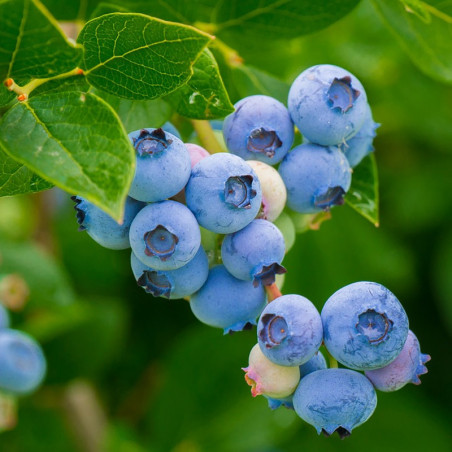






Deciduous shrub with edible berries. The blueberry has angular branches, alternate oval leaves, and small white to pinkish flowers, which produce the blueberry fruit, a dark blue berry with a sweet and slightly tart flavor.
Vaccinium myrtillus is a deciduous perennial shrub from the Ericaceae family. It is commonly known as wild blueberry or European blueberry. It grows to about 0.5–1.5 meters in height and has a weak root system. Its stems are slender and rigid, often appearing woody at the base. The leaves are oval-shaped, dark green on the upper side, and paler underneath.
The flowers of V. myrtillus are small and range in color from white to pink, appearing in terminal clusters in spring. The fruits are round, dark blue berries that ripen in summer or early autumn.
Wild blueberry is native to Europe and Asia, and is commonly found in coniferous forests, shrublands, and moist meadows. It is commercially cultivated for its fruit, which is used in the production of juices, jams, and other food products. It has also been used in traditional medicine to treat various health conditions.
Keep the seeds consistently moist (but not waterlogged), at a temperature around 20 °C.
Cover the seeds very lightly or sow them on the surface, pressing them gently into the soil to ensure contact.
After germination, they can be kept in cooler conditions.

| January | February | March | April | May | June | July | August | September | October | November | December |
Data sheet
No customer questions for the moment.